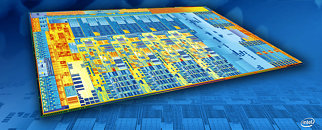Friday, June 19th 2015

Intel to Debut its Core "Skylake" Processors at Gamescom 2015
Intel is expected to debut its 6th generation Core "Skylake" desktop processor family at Gamescom 2015, which will be held in Cologne, Germany, between 5th and 9th August. PC enthusiasts should look forward to two parts in particular, the Core i7-6700K, and the Core i5-6600K. The two quad-core chips will be built in the LGA1151 package, compatible with upcoming motherboards based on Intel's 100-series chipset. Motherboards based on the Intel Z170 Express chipset will allow CPU overclocking. The integrated memory controller of "Skylake" CPUs support both DDR3 and DDR4 memory standards, and should prove to be a transition point between the two.
Following the i7-6700K and i5-6600K with Z170 chipset motherboards, at Gamescom; Intel will launch other parts in the 6th gen. Core processor family between late-August and early-September. Those launches will include i7-6700/6700T, Core i5-6600, 6500, 6400, 6600T, 6500T and 6400T, and H170 and B150 chipsets. Then in late-September, the company will launch the entry-level H110 chipset.
Source:
DigiTimes
Following the i7-6700K and i5-6600K with Z170 chipset motherboards, at Gamescom; Intel will launch other parts in the 6th gen. Core processor family between late-August and early-September. Those launches will include i7-6700/6700T, Core i5-6600, 6500, 6400, 6600T, 6500T and 6400T, and H170 and B150 chipsets. Then in late-September, the company will launch the entry-level H110 chipset.

55 Comments on Intel to Debut its Core "Skylake" Processors at Gamescom 2015
Simply, they had plans for IA64 dominance and AMD really upset those plans.
Wikipedia citing a 2006 TechWorld article,University of Washington CS course paper from 2007:A little harder is finding the exact information back in 1999-2001 detailing their top-down approach for the replacement of x86 (Itanium > Xeon > Pentium). I remember this as it was a very exciting time. Can probably go through my boot magazines if I can't find an Anandtech, ARS, or Tomshardware article from back then. Intel of course never got to IA64 Xeon stage because with the first Itanium doing so poorly and AMD's announcement being so hopeful (good 64 and 32bit performance) they decided on making EMT64T Xeons instead.
Not to tread too far off-topic, I am looking forward to Skylake. More for the chipsets than anything else. Get me a moderately-priced H170 ITX board with an i5-6600! More than enough lanes there for an Ultra M.2 (why isn't it called M.4? Ughh....)
CPU-Z
GPU-Z
Cinebench Core i7-6700K(ES) and Core i7-4790K
source
www.techbang.com/posts/24629
AMD, by launching x86-64, tied Intel's hands. x86-64 did pretty much everything IA64 did but also maintained backwards compatibility. Intel knew IA64 was done at that point so they rushed to slap EM64T on Pentium 4 chips.
I'm planning on buying a Skylake-S 6700 ASAP.